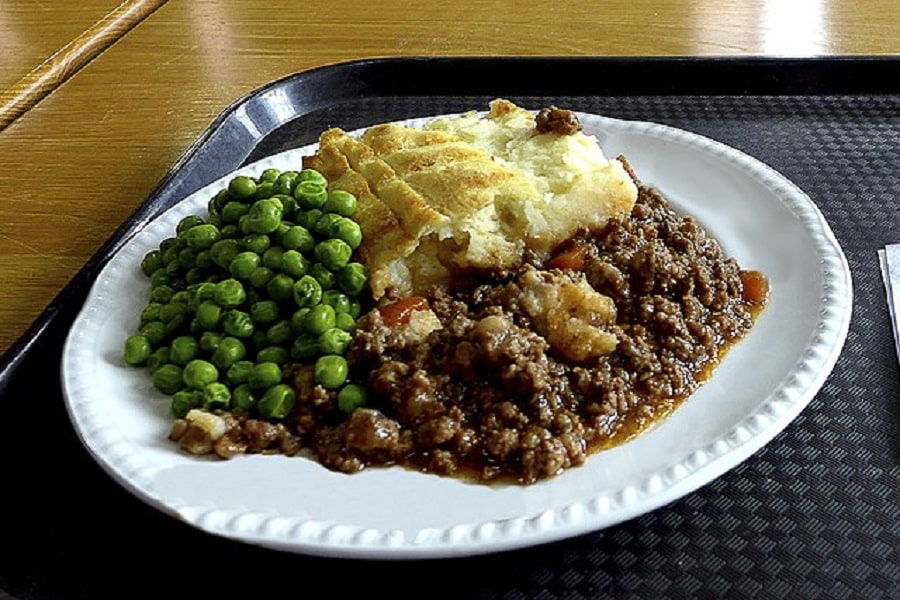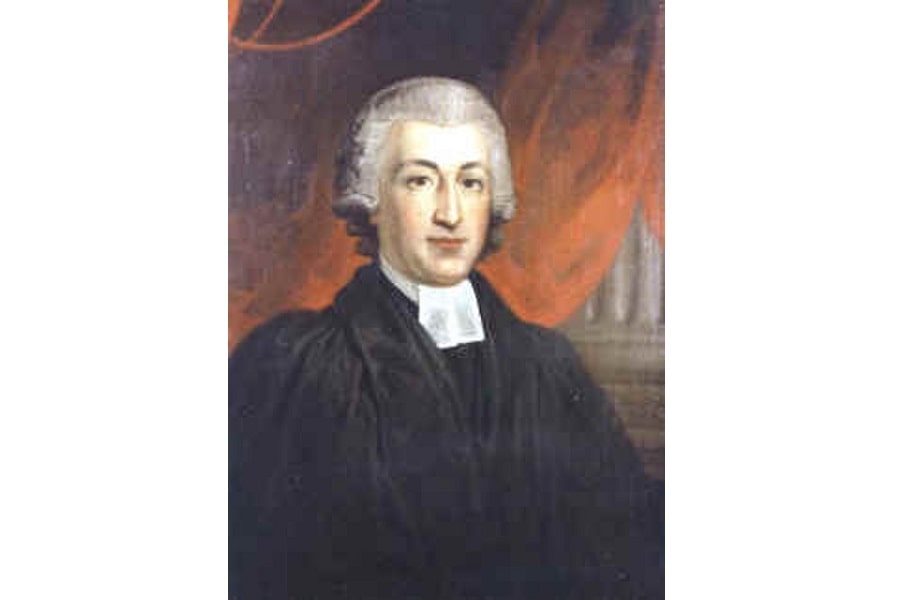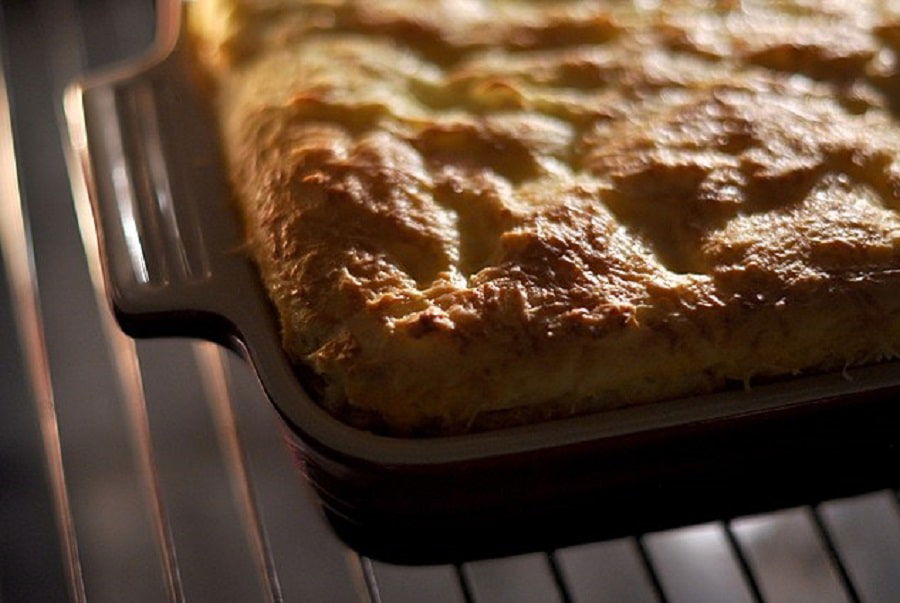A favorite comfort food in Irish pubs and homes, the humble shepherd’s pie – a savory baked dish traditionally consisting of mutton or lamb topped with mashed potatoes – was first documented in Scotland in 1849. Its predecessor, the cottage pie (typically distinguished by using ground beef rather than ground lamb, though the two terms have frequently been used interchangeably) was first documented in England in 1791.
In both cases, however, the concept is the same – a frugal yet hearty dish constructed largely from leftover meat and simple ingredients. And after potatoes were first introduced to the UK and Ireland, the affordable, durable starch caught on as the perfect topper for this baked dish.
Table of Contents
What is the Origin of Shepherd’s Pie?

Shepherd’s pie is a traditional British dish with a long history that dates back to the late 18th century. Its origin is believed to be in the United Kingdom, particularly in Scotland and northern England.
The dish was originally made as a means of using leftover roasted meat, particularly lamb or mutton, combined with vegetables and topped with mashed potatoes. It was a frugal and practical way for shepherds and rural communities to make the most of their available ingredients and avoid wasting any leftover meat. The mashed potato topping served as a convenient and economical way to stretch the dish and create a hearty and satisfying meal.
In modern times, variations of shepherd’s pie can be found in many different cultures, and the type of meat used can vary. For instance, in the United States and some other regions, a similar dish made with ground beef is often called “cottage pie.” The key elements of the dish, however, remain consistent: a meat and vegetable filling topped with mashed potatoes and baked until golden and delicious.
The Arrival of the Potato

It’s impossible to give a precise name of who first created the baked dish we know today as shepherd’s pie.
The English naturalist Sir Thomas Harriot returned from Sir Walter Raleigh’s colony in North Carolina in 1586, bringing with him one of the botanical treasures of the New World – potatoes. Cited in his A Briefe and True Report of the New Found Land of Virginia as “Openavk,” they were described as being very good when “boiled or sodden.”
Raleigh himself is credited with introducing potatoes to Ireland some three years later. Some other sources, meanwhile, cite Sir Francis Drake introducing potatoes to Britain about the same time as he returned from his circumnavigation of the globe.
The soil and weather of the British Isles were quite suitable for growing the imported tuber. Thus, as England and Ireland moved into the 17th Century, the potato began to become increasingly common – though there was still resistance to the imported new food across Europe, and it would be the 1700s before the potato rose to its place as a staple of the English diet.
READ MORE: The Irish Famine
A Frugal Food

From all the way back to prehistory and our time as hunter-gatherers, people have always tried to get as much mileage as possible out of their food. Food was wrapped in straw, buried underground, submerged in icy streams, or packed in ice and snow to prevent spoilage and make sure nothing went to waste.
The skill of making use of leftover food is particularly critical to the poor. When the ability to get more is restricted, getting the most from what you have is imperative.
So it was in the cottages of the British Isles. The leftover meat of the weekend roast would be kept in order to be used for later meals – and the arrival of the potato offered a particularly satisfying way to do it.
Using mashed potatoes to make a crust for the top, this leftover meat could be minced and made into a pie. Whatever vegetables might be at hand – carrots, peas, onions, for instance – could likewise be added in a layer under the potatoes to enhance the pie even more.
The result was something affordable, simple, and hearty. For the struggling farmers and laborers of the British Isles, it was an ideal meal option – a pie for the poor in their cottages, which naturally came to be called “cottage pie.”
Formal Recognition

Exactly when this particular meal was first made, or when it became common, is impossible to know. We know, obviously, that it happened after the potato had been imported and began to be grown – but how long it took for the idea of the familiar meat and potato pie to take root is a secret lost to time.
We do know that the first reference to it appeared in 1791 in Diary of a Country Parson by Reverend James Woodforde of Norfolk. A meticulous recorder of everyday details such as the weather, illnesses, meals, and other minutia from the community, Woodforde’s diary is an invaluable look at the day-to-day occurrences of life in the late 18th Century.
According to Volume 13 of his diary, on August 29th of 1791, the Reverend had “Cottage-Pye and rost Beef.” It is unlikely that Woodforde coined the term – given his level of detail in writing, he almost certainly would have mentioned doing so – but this is the first recorded instance of the dish’s name.
It seems, however, that the name of the dish wasn’t yet consistent. In her A New System of Domestic Cookery: Formed Upon Principles of Economy; and Adapted to the Use of Private Families published in 1806, writer Maria Rundell included a brief description of a recipe for something called “Sanders” which called for mashed potatoes over minced beef or mutton – something which seems very clearly to be cottage pie.
Rundell had lived in Shropshire, in Western England near Wales, while Reverend Woodforde ate his “cottage-pye” in Norfolk, on the Eastern coast. Her cookbook was published when she was about 60 years old, meaning her introduction to the dish she knew as Sanders could have come years before the Reverend’s meal.
This means it’s possible that Sanders might have been a regional name for cottage pie, or it may have been an antiquated term that was in the process of being supplanted by the newer name. Whatever the case, it confirms that the dish was found in multiple parts of England, and almost certainly was being made throughout the British Isles.
Cottage Pie vs Shepherd’s Pie

The name shepherd’s pie wouldn’t appear until 1849, in a cookbook from Edinburgh, Scotland, called The Practice of Cookery and Pastry. It specifically noted that any sort of minced meat could be used – as noted earlier, the terms cottage pie and shepherd’s pie have been used interchangeably in different times and places, and that certainly seems to have been the case here.
Interestingly, a later English cookbook – Kettner’s Book of the Table, published in 1877 – also makes mention of shepherd’s pie and refers to it as a Scottish variation of Irish stew. While this is possible, this citation may refer to a specific variant that included a wheat-flour pastry crust on top of the mashed potatoes (something which the English cookbook denounced as too starchy).
While this reference did not specify that the shepherd’s pie used lamb or mutton, those were the traditional meats used in Irish stew. This makes it a reasonable assumption that those specific meats were at least beginning to distinguish a shepherd’s pie from a cottage pie in popular understanding.
Cottage pies also traditionally used a sliced potato topping rather than mashed. But this isn’t consistent, and both cottage and shepherd’s pies have been made with either option.
Still, a number of sources still seem to use the terms interchangeably. Even today, it’s not uncommon to find versions of shepherd’s pie made with beef or other meats in place of the more traditional lamb.
The Irish Pie

But with the history of both cottage and shepherd’s pie being so murky, and with the two terms being commonly interchangeable, why is it that cottage pie is more closely associated with England, while the shepherd’s pie is almost inextricably linked with Ireland? The answer lies in the history, economy, and politics of the two countries.
After centuries of troubled political entanglement between the two countries, English King Henry VIII set out a national ambition of reconquering Ireland. This would come to fruition by the beginning of the 17th Century and would be followed by widespread colonization and land confiscation.
READ MORE: How Did Henry VIII Die? The Injury That Costs a Life
Moving through the 17th and into the 18th Centuries, Ireland would become a nation of tenant farmers, growing food for usually absent English landlords. As a result, Ireland would remain mired in poverty for years to come.
While the frugality this necessitated was not unique to Ireland – the English and Scottish, as we have seen, both relied on versions of the simple meat-and-potato pie – the Irish were more limited in their resources.
Lamb and mutton were inexpensive meats, as compared to beef. That’s why they were the usual ingredient in Irish stew, and why they likewise were the most common ingredient in the Irish versions of shepherd’s pie, while the British version, where people were more likely to be able to afford beef, came to be more commonly referred to as cottage pie.
This was not, of course, a sharp delineation. The line between the two dishes could still be blurry, and the possible variations went far beyond simply a choice between lamb and beef. Nonetheless, the overall economic conditions of the two countries generally meant that shepherd’s pie made with lamb (called Pióg an aoire in the Irish language) was a predominantly Irish staple, while the cottage pie made with beef was more prevalent in other areas of the British Isles.
The Variations of Shepherd’s Pie

To get back to the basics – a traditional shepherd’s pie, as it is understood today, consists of minced lamb covered with a layer of baked potatoes. That said, recipes vary widely for shepherd’s pie, both within the British Isles and elsewhere, and there are a surprising number of choices on how to make a “true” shepherd’s pie.
Early variants of shepherd’s pie could include a thin pastry crust over the potatoes, which seems to be predominantly a Scottish variation. Likewise, early recipes could call for sliced beef rather than minced, and an option of the cottage pie called the Cumberland pie (from Northwest England) uses larger chunks of beef instead.
In some versions of the dish, the mashed potato was simply a crust on the top. It could be on the bottom as well, and some versions also put mashed potatoes on the sides of the pan to completely encase the meat.
There is also a modern variation of shepherd’s pie, called shepherdess pie, which replaces the minced meat with a veggie mince instead. Recipes for both vegetarian and vegan versions exist.
The Cumberland pie, previously mentioned, can in some cases have a lamb filling rather than beef (or sometimes pork sausage), making it effectively a shepherd’s pie. Some versions also omitted the pastry case as well, having only the traditional mashed potato topping.
Beyond the British Isles
While the traditional shepherd’s pie is a product of the British Isles, the simple notion of an economical dish made from leftover meat combined with potato has appeared independently elsewhere. In Canada, one such dish – beef topped with sweet corn and a mashed potato crust called Pâté chinois – is even alternately known as shepherd’s pie.
Portugal likewise has a dish with the same basic structure as cottage pie, consisting of meat (normally veal, but possibly poultry or even fish) topped with mashed potatoes. Indonesia’s pastel tutup consists of a number of meats topped with vegetables and mashed potatoes.
In the Western Hemisphere where the potato originated, a number of such dishes can be found. Both Chile and Argentina have a dish, pastel de papas, which is effectively a version of cottage pie.
Uruguay’s pastel de carne is likewise a cottage pie with the addition of sliced hard-boiled eggs. And while it doesn’t involve the potato, Brazil has a similar dish called escondidinho which uses another tuber, cassava root, pureed in a layer over sun-dried meat or fish.